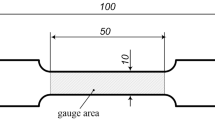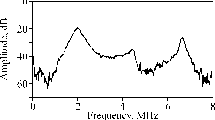Abstract
An ultrasonic technique is described for continuously monitoring fatigue-crack growth at temperatures up to 300°C in wedge-opening-load type fracture-toughness specimens. The sound-wave energies reflected from the leading edge of the fatigue crack and from the bottom surface of the specimen are electronically compared and used to control the crack-measurement system.
Similar content being viewed by others
References
King, R. H. and Smith, A. I., “Thermal Fatigue Processes and Testing Techniques: A Review of Progress Since 1960,” Proc. Intnatl. Conf. on Thermal and High Strain Fatigue, The Metals & Metallurgy Trust, London, 364 (1967).
Radon, J. C., Burns, D. J. andBenham, P. P., “Push-pull Lowendurance Fatigue of Cast-irons and Steels,”Jnl. Iron and Steel Inst.,204,208 (1966).
Dawson, R. A. T., Elder, W. J., Hill, C. J. and Price, A. T., “High-strain Fatigue of Austenite Steel,” Ibid Ref. (1) Proc Intnatl. Conf. on Thermal and High Strain Fatigue, The Metals & Metallurgy Trust, London, 239.
Clark, W. G., Jr. and Ceschini, L. J., “An Ultrasonic Crack Growth Monitor,” Materials Evaluation, 180 (1969).
Branson Instruments Bulletin T-103d-13, “Sonoray High Temperature (up to 1000°F) Transducer.”
Bratina, W. J., McGrath, J. T. and Moore, R. I., “Ultrasonic Methods in the Study of Mechanical Characteristics of Iron and Carbon Steels,” Proc. 5th Intnatl. Cong. on Non-destructive Testing, Montreal (1967).
Liu, H. W., “Fatigue Crack Propagation and the Stresses and Strains in the Vicinity of a Crack,”Appl. Mater. Res.,3,229 (1964).
Author information
Authors and Affiliations
Rights and permissions
About this article
Cite this article
Jeglic, F., Niessen, P. & Burns, D.J. Ultrasonic detection of high-temperature fatigue-crack growth. Experimental Mechanics 11, 82–85 (1971). https://doi.org/10.1007/BF02320625
Issue Date:
DOI: https://doi.org/10.1007/BF02320625




